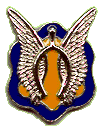
Campaign

Campaign
Operation Gadsden
Officially classified as a search and destroy operation, GADSDEN employed two brigades of the U.S. 25th Infantry Division under the command of Major General Frederick C. Weyand. Involved were the 3d Brigade, 4th Infantry Division, commanded by Colonel Marshall B. Garth, and the 196th Light Infantry Brigade, Brigadier General Richard T. Knowles commanding.
The GADSDEN area of operation was some thirty kilometers northwest of Tay Ninh, in the vicinity of Lo Go and Xom Gina, South Vietnamese villages on the Cambodian border. (Map 9) The terrain is generally flat and the vegetation ranges from rice fields to triple-canopy jungle. During the operation grasslands in the area were as tall as six feet. There was some heavy mud in paddy areas, but most of the previously flooded positions had dried, thus facilitating overland movement. Weather was favorable for the operation.
Before the operation it was suspected that elements of the 271st and 272d Viet Cong Regiments, 70th Guard Regiment, 680th Training Regiment, and miscellaneous elements subordinate to the Central Office of South Vietnam-including several medical units-might be encountered. According to intelligence sources, Lo Go was a major supply center of the Viet Cong forces where shipments from Cambodia were transferred to local units. Therefore, the area of operation was believed to contain extensive supply and ammunition caches, communications storage areas, hospital facilities, base camps, and major training complexes. In addition, personnel and supply routes to and from Cambodia were expected to be found.
The plans stipulated that Operation GADSDEN be conducted in several phases. During Phase I, forces would be positioned for the attack with combat elements established as close to the operational area as Trai Bi. Phase II, starting on D-day, would include a two-brigade attack to the west to seize two intermediate objectives, secure landing zones, and establish fire support bases. This would be followed by attacks on Lo Go and Xom Giua. Other objectives would be designated later. Search and destroy missions would be conducted in the zone, and blocking positions would be established to seal infiltration and exfiltration routes along the border during Phase III. During the last phase the units would expand the area of operation to the southeast to search for and destroy enemy forces and base camps.
Using a combination of airmobile assaults and attacks by mechanized battalions, the operation went as planned. During the 20-day duration of GADSDEN, the fighting was typified by small unit actions. Even though the fortifications encountered were extensive and many were capable of withstanding very heavy artillery and air strikes, the enemy chose not to stand and fight but rather to employ guerrilla tactics.
Evidence was uncovered to confirm that in the operational area were located a training area for main force Viet Cong units which included an obstacle course and an elaborate land navigation course; a rest and recuperation center including numerous medical facilities and supplies, as well as a 100-gallon still with 2,000 gallons of mash and 50 bottles of alcohol; an ordnance facility for fabricating and storing bombs, artillery rounds, and grenades; and numerous caches of food and other material. Also identified in the area were the postal transportation section, the current affairs section, and the military staff directorate of the Central Office of South Vietnam. Captured documents and ralliers identified elements of the 3d Battalion? 271st Viet Cong Regiment; the 3d Battalion, 70th Viet Cong Regiment; the 680th Training Regiment; and a medical unit subordinate to the Central Office.
In addition to confirming the location of various units and installations in the area, GADSDEN inflicted some fairly significant losses upon the enemy. His casualties totaled at least 161 killed and 2 captured. He lost 26 weapons, 390 tons of rice (of which 50 percent was evacuated), salt, sugar, tea, soap, cigarettes, and 550 pounds of documents. Five hundred fifty huts, 590 bunkers, and 28 sampans were destroyed, as were numerous items of explosives and ammunition. U.S. battle losses were 29 killed and 107 wounded.
GADSDEN also accomplished its primary mission of positioning troops and supplies for JUNCTION CITY. The chances of success for that operation were bolstered by the opinion expressed by Colonel Garth: "GADSDEN proved the ability of mechanized units to operate in heavily vegetated terrain and that U.S. forces have the capability of moving at their desire within War Zone C."
